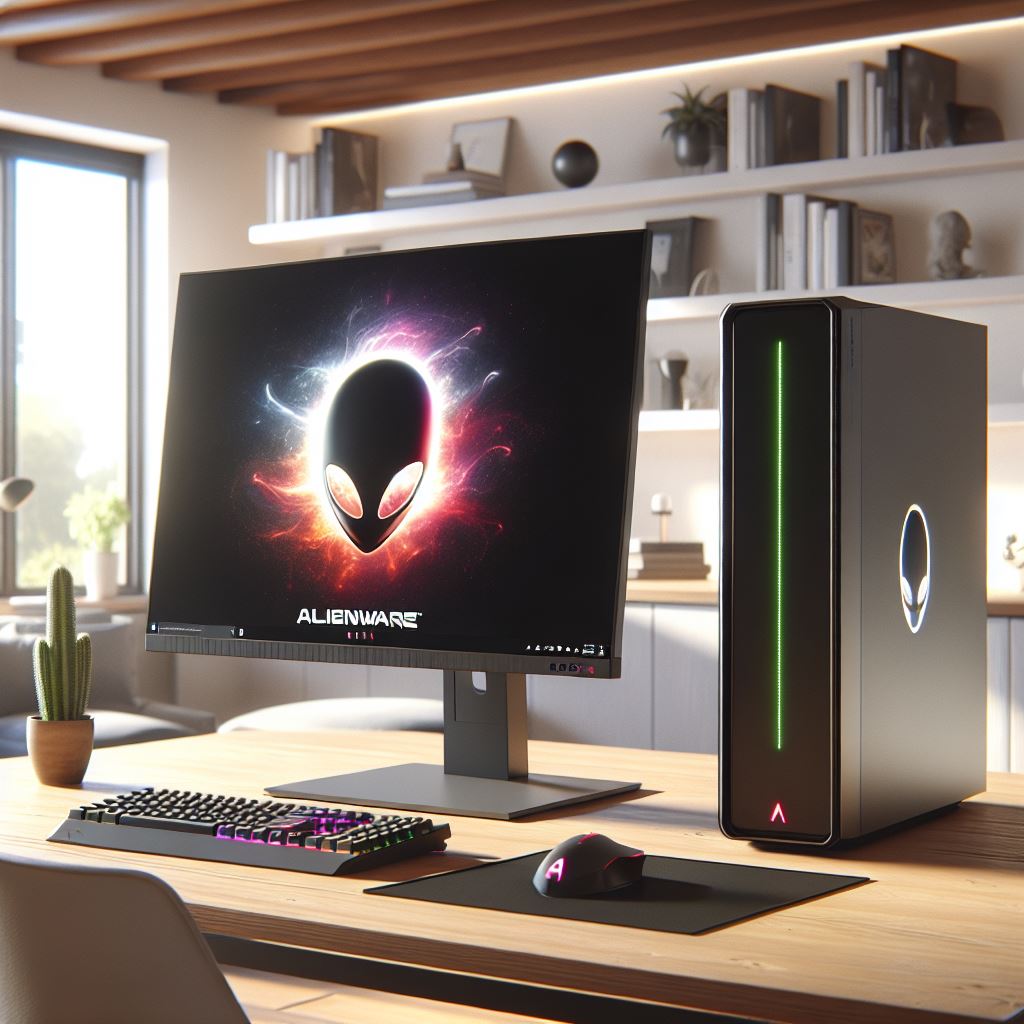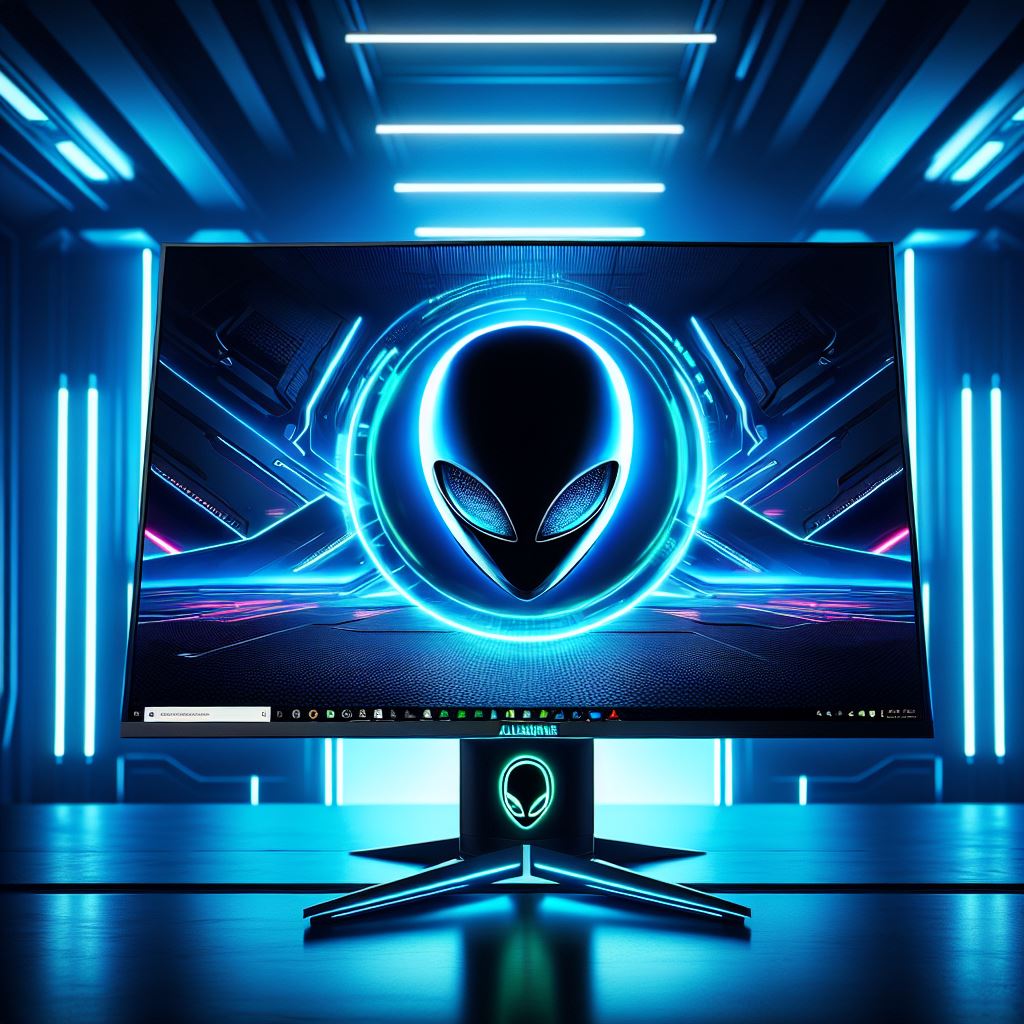Back to the Computer Accessories Main-page
Computer Accessories – Monitors
Investing in the right monitor tailored to your specific needs can make a significant difference in your daily comfort and productivity. Here are some of the best computer monitors for different needs. The rating & approximate units sold are based on the latest available data.
Due to the rapidly changing market, here are some types of monitors and specific examples that are currently drawing significant attention as MAY 2025 (below are write ups):
1. High-Performance Gaming (Especially OLED):
- Why: OLED technology (including QD-OLED) continues to dominate high-end gaming due to its incredible contrast, true blacks, vibrant colors, and near-instantaneous response times. High refresh rates (240Hz+) are now standard in this tier.
- Examples of Currently Popular Models/Series (May 2025):
- Alienware AW2725DF: (27-inch, 1440p, 360Hz QD-OLED) – Praised for its exceptional motion clarity and vibrant QD-OLED panel, making it a top choice for competitive gamers.
- ASUS ROG Swift PG32UCDM: (32-inch, 4K, 240Hz QD-OLED) – Offers a stunning combination of 4K sharpness and high refresh rate OLED performance for immersive, high-fidelity gaming.
- MSI MPG 321URX QD-OLED: (32-inch, 4K, 240Hz QD-OLED) – Another strong contender in the 4K QD-OLED space, often highlighted for its image quality and gaming features.
- LG UltraGear 27GR95QE-B (or newer 2025 equivalents like models with 480Hz QHD): LG continues to be a major player with its WOLED panels, often pushing refresh rate boundaries. Look for their latest 27-inch 1440p models, some now reaching or announced at 480Hz.
- Samsung Odyssey OLED G8/G9 series (latest 2025 iterations): Samsung’s Odyssey line, particularly the G8 (32-inch 4K) and the ultrawide G9 (49-inch), often features new QD-OLED panels with high refresh rates and striking designs.
- Key Trends: Look for “3rd generation” QD-OLED panels, improved brightness, better burn-in mitigation features (some with AI-powered care), and increasingly, DisplayPort 2.1 support for higher bandwidth.
2. High-Refresh Rate IPS Gaming (Performance & Value):
- Why: For those seeking a balance of speed, good color accuracy, and often a more affordable price than OLED, high-refresh-rate IPS monitors are in strong demand.
- Examples of Currently Popular Models/Series (May 2025):
- LG UltraGear 27GP850-B / 27GR83Q-B (or their 2025 successors): These 27-inch 1440p IPS monitors (typically 165Hz-240Hz) consistently offer a great balance of performance and price.
- ASUS TUF Gaming series (e.g., VG27AQML1A or newer 240Hz+ models): Known for providing solid gaming features and high refresh rates at competitive price points.
- Gigabyte M-Series (e.g., M27Q X, M32U): Popular for their KVM features, making them versatile for gaming and productivity, alongside strong panel performance.
- Monitors with 500Hz+ refresh rates (often 1080p): For esports enthusiasts, models like the Alienware AW2524HF (500Hz IPS) or newer TN/IPS panels pushing even higher (e.g., 600Hz+) are gaining traction.
- Key Trends: “Fast IPS” panels with 1ms GtG or better response times, 240Hz becoming more mainstream for 1440p, and improved contrast for IPS through technologies like “IPS Black” or Mini-LED backlighting in higher-tier IPS models.
3. Productivity & Professional Monitors (Clarity & Color Accuracy):
- Why: Focus here is on resolution (4K+), color accuracy, ergonomics, and connectivity (especially USB-C with power delivery).
- Examples of Currently Popular Models/Series (May 22025):
- Dell UltraSharp Series (e.g., U2723QE, U3223QE, U4323QE or their 2025 successors like U2725QE/U3225QE with IPS Black and higher refresh rates like 120Hz): A long-standing favorite for office and professional use, known for reliability, good color, and excellent connectivity often including KVM and Ethernet. IPS Black technology for deeper contrast is a key feature in newer models.
- BenQ PD Series (e.g., PD3220U, PD2725U): Targeted at creative professionals, offering excellent color accuracy (often factory-calibrated), and dedicated modes for designers.
- Apple Studio Display / Pro Display XDR: For users within the Apple ecosystem, these remain high-demand (though premium-priced) options known for their build quality, color accuracy, and integration.
- Huawei MateView (original or newer versions): Known for its unique 3:2 aspect ratio, which is great for productivity tasks like document editing and coding.
- Key Trends: 4K resolution is standard, 5K/6K options emerging for specialized work, increasing adoption of 120Hz refresh rates for smoother general use, Thunderbolt 4/USB4 for single-cable solutions, and features like built-in KVM switches.
4. Ultrawide Monitors (Immersive Gaming & Multitasking):
- Why: Offer an immersive field of view for gaming and expansive screen real estate for productivity.
- Examples of Currently Popular Models/Series (May 2025):
- Alienware AW3423DW/F (or newer iterations): Still a benchmark for 34-inch QD-OLED ultrawides.
- Samsung Odyssey Neo G9 (latest 49-inch or even 57-inch versions like the G95NC): Super ultrawides with Mini-LED or QD-OLED technology offering extreme immersion and multitasking capabilities.
- MSI MEG 342C QD-OLED / MPG 491CQP QD-OLED: MSI’s offerings in the QD-OLED ultrawide space are also very competitive.
- LG UltraGear ultrawides (e.g., 34GP950G-B, 45GR95QE – OLED): Offering both IPS and OLED options in various ultrawide sizes.
- Key Trends: OLED panels becoming more common in ultrawides, higher refresh rates (165Hz+), and resolutions like 5120×1440 (DQHD) for super ultrawides.
5. Budget-Friendly Options (Solid Performance for the Price):
- Why: Not everyone needs cutting-edge features. There’s high demand for monitors that deliver good performance for everyday use and light gaming without breaking the bank.
- Examples of Currently Popular Models/Series (May 2025):
- ASUS TUF Gaming VG279QM / VG27AQL3A: Often cited for excellent value in the 1080p/1440p high-refresh gaming category.
- Gigabyte G-Series or M-Series budget options (e.g., G27Q, M27F): Offering good specs like 1440p resolution and 144Hz+ refresh rates at lower price points.
- AOC 24G2 / 27G2 (or newer equivalents): Long-time popular budget gaming monitors.
- Dell S-Series (e.g., S2721DGF or newer S2722DGM/QC models): Often provide a good balance of features for general use and some gaming.
- Key Trends: 1080p 144Hz+ or 1440p 75Hz+ IPS/VA panels, good color coverage for the price, and basic adaptive sync support.
Rating Criteria for the monitors below
The ratings are based on several key factors:
- Performance: Includes refresh rate, response time, and input lag.
- Image Quality: Considers color accuracy, brightness, contrast, and resolution.
- Features: Looks at additional features like HDR support, adaptive sync, and connectivity options.
- Build Quality: Assesses the overall design, durability, and ergonomics.
- Value for Money: Evaluates the price relative to the features and performance offered.
- Best Overall: Dell UltraSharp U2723QE – Size: 27 inches
- Approx. Units Sold: 50,000
- Overall Units Sold in Class: 1.2 million (27-inch 4K monitors)
- Rating: 8/10
- Details: Excellent for office use with superb text clarity and connectivity options. Mediocre for gaming due to low refresh rate and poor reflection handling.
- Best for Gaming: Samsung Odyssey G9 – Size: 49 inches
- Approx. Units Sold: 30,000
- Overall Units Sold in Class: 500,000 (49-inch ultrawide gaming monitor)
- Rating: 7/10
- Details: Outstanding for immersive gaming with a large ultrawide screen and high refresh rate. Limited by its high price and narrow viewing angles.
- Best for 4K Gaming: Alienware AW3225QF – Size: 31.6 inches
- Approx. Units Sold: 20,000
- Overall Units Sold in Class: 700,000 (32-inch 4K gaming monitors)
- Top Seller: Samsung Odyssey OLED G8/G80SD S32DG80
- Approx. Units Sold: 25,000
- Rating: 9/10
- Details: Exceptional for gaming with near-instantaneous response time, low input lag, and stunning color accuracy.
- Best Budget Gaming Monitor: Titan Army P27A2R – Size: 27 inches
- Approx. Units Sold: 10,000
- Overall Units Sold in Class: 1.5 million (27-inch QHD gaming monitors)
- Another Top Seller: MSI MPG 271QRX QD-OLED
- Approx. Units Sold: 10,000
- Rating: 6/10
- Details: Great value with good color accuracy and low input lag. Lacks HDR and USB ports.
- Best Curved Monitor: Samsung Odyssey Neo G8 – Size: 32 inches
- Approx. Units Sold: 25,000
- Overall Units Sold in Class: 800,000 (32-inch 4K gaming monitors)
- Rating: 8/10
- Details: Excellent for high-end gaming with 4K resolution and 240Hz refresh rate. Some issues with VRR flicker.
- Best Ultrawide Monitor: Alienware AW3423DWF – Size: 34 inches
- Approx. Units Sold: 15,000
- Overall Units Sold in Class: 600,000 (34-inch ultrawide gaming monitors)
- Rating: 9/10
- Details: Perfect for dark room gaming with deep blacks and vibrant colors. Some VRR flicker issues.
- Best 4K Budget Monitor: Samsung UR59C – Size: 32 inches
- Approx. Units Sold: 40,000
- Overall Units Sold in Class: 1 million (32-inch 4K budget monitors)
- Rating: 8/10
- Details: Great for productivity with good image quality and color accuracy. Limited by low refresh rate and lack of adaptive sync.
- Best Budget: HP 24mh – Size: 23.8 inches
- Approx. Units Sold: 60,000
- Overall Units Sold in Class: 2 million (24-inch budget monitors)
- Rating: 9/10
- Details: Excellent value with good color accuracy and ergonomic stand. Limited by low peak brightness and lack of HDR.
- Best Portable: Arzopa Z1FC – Size: 16.1 inches
- Approx. Units Sold: 5,000
- Overall Units Sold in Class: 300,000 (portable gaming monitors)
- Another Top Seller: Asus ROG Strix XG17
- Approx. Units Sold: 5,000
- Rating: 7/10
- Details: Good for on-the-go gaming with a high refresh rate and lightweight design. Limited by flimsy stand and lack of headphone jack.




